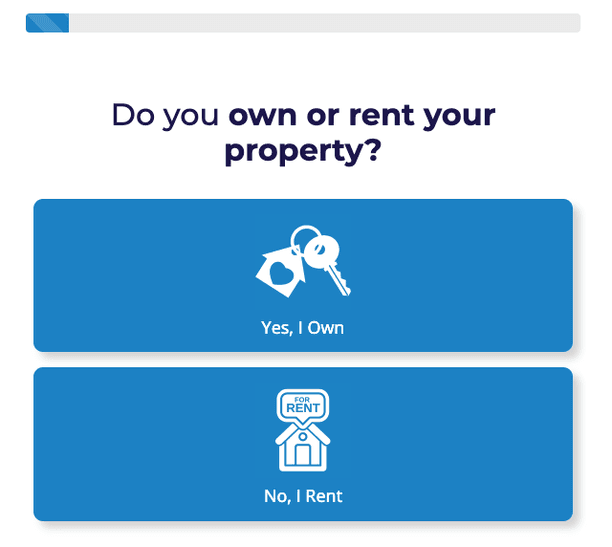Australia’s 5 Most Common Solar Questions…Answered Once & For All

Joe White
Contributing Renewables Editor
4 min read · 8th April 2025
Sitting On The Fence About Solar? You’re not alone.
Every one of the 4 million Aussie homeowners who’ve already made the solar switch had questions too.
And rightly so.
With so much misinformation doing the rounds on the internet about government solar schemes, no net cost solar, and potential dollar savings.
It’s hard to know ‘who’…and ‘what’ to trust.
In the next 4 minutes we're going to cut through the noise and separate fact from fiction.
So in 2025, you can make an informed decision and see if solar is right for you.
We’ve reached out to 10 accredited solar experts who revealed the 5 Most Common Solar Questions they receive weekly from homeowners.
So, let’s crack on and start with the big one.
Question #1 “Is Solar Right For Me?”
No. Not necessarily.
With the never-ending solar ads jamming up your news feed on social media. And door knockers prowling the suburbs saying anything to make a sale.
You might be led to believe solar energy is the answer to all your energy bill problems as long as you have a roof.
This is just not true.
For example, if your energy bill is less than $250 per quarter. Or your roof is covered in shade from trees or even your neighbour's house.
It might be best to keep your money in your pocket.
As you won’t receive the solar savings benefits everyone is raving about.
Remember, every house is different. So don’t let a pushy door knocker railroad you into getting solar until you know the facts from an expert.
Question #2 “What is No-Net-Cost Solar?”
In a nutshell:
No-net-cost solar means you can get solar panels installed without adding a single dollar to your monthly bills. And in some cases, with little or no upfront cost.
How is this even possible?
With the combination of your government solar incentives and solar savings you’ll get straight off the bat from your new system. This is often enough to cover the cost of the full installation.
And even if your postcode doesn’t qualify for a solar incentives. Many accredited solar companies offer customers green finance and 0% payment plans.
This means not only do you get a new solar system paid off in as little as 2-5 years…
After you’re square, you’ll enjoy up to 65-85% off your energy bills for the lifetime of your system.
Can’t say fairer than that!

Sample energy bill from one of the 'Big 3' providers
Question #3 “Can everyone get No-Net-Cost Solar?”
No, I’m afraid not.
For the numbers to make sense, first you need to find out if you qualify for your federal government solar incentives and how much you're entitled to.
(See question #4)
Next step.
Speak to an accredited solar expert to see if the location of your home, roof aspect ratio, and current electricity spend make your home suitable.
If you don’t tick all the boxes, solar isn’t for you.
However, if you do…
This could be a solid financial investment you make in 2025 which will reward you for the next 20 years.
Question #4 “How Do I Find Out If I Qualify For My Solar Incentives?”
There are two options:
Option 1 - Spend a few hours researching the countless solar blogs, find the most recent figures for solar amounts for your state, and cross-check with your postcode.
Do some number crunching of your own and hope your calculations check out.

Option 2 - Save yourself time, energy, and stress by answering a few simple questions.
Then an accredited solar expert will contact you with your federal incentive amount and answer any questions not covered in this article.
This is a free, no-obligation service that takes only 30 seconds to complete.
Find out your solar incentive amount by answering the question below.
Question #5 “Is Solar Really Worth It?”
Short answer: Yes.
The Australian Energy Regulator has confirmed that electricity prices will rise in the next five years. Your bills are going one way…UP

So, it makes sense to look into solar power to protect yourself in the future.
Especially as well-thought-out solar and battery system can save you between 65-85% on your energy bill and even lead to credits in high-generating months.
And if you qualify for the government rebate in your state, along with your monthly savings, the system can pay for itself within 2 – 5 years.
With little or no money coming out of your pocket each month.
So yes, if your home meets the criteria, solar power is worth it in 2025.
And if you decide to sell your home in the future…
Installing a good quality solar power system will also increase the home's value so new owners can benefit from the free energy on the roof.
But remember, although solar energy makes a lot of sense, going with the official numbers,
It’s important to understand your situation first.
We caught up with Steve Hill, the CEO over at Solar Incentives, Australia’s leading solar grant specialist.
He gave his thoughts to those sitting on the fence about solar.

"Truth is, solar isn’t for everybody, no matter what solar companies tell you.
From conversations with tens of thousands of Australians across the country, every homeowner's situation is unique."
My advice...Find out about your government incentives, speak to an expert and then make an informed decision.
This way, you’ll know for sure whether you’re missing out on low energy bills, or that solar isn’t for you.
Then you can get on with your life...Ignore those panels on your neighbours' roofs and know you made the right decision.
What's The Future of Solar Energy in Australia?
Whichever way you look at it. It’s bright.
Here at home, according to the Australian PV Institute, as of March 2024, there are over 3.76 million solar installations in Australia with a combined capacity of over 35.6 gigawatts. (It's over 4 million now)
On a global scale, Australia is a leader in renewable energy with the Australian Government is targeting 82% renewable energy in our electricity grids by 2030.

This means it's not a question of ‘if’ homeowners will continue to switch to solar. It's a question of ‘when’. But whether it’s ‘now’ depends on your current situation.
If you’d like to make your own decision on solar, find out your solar incentive amount by answering the question below.
This free, no-obligation service takes only 30 seconds to complete.
At the end of the day, at least you’ll know if you are missing out on thousands of dollars in savings, and stop wondering if you’re missing out every time you see a solar panel on your neighbour's roof.
See how much you're eligible for with the federal solar incentives scheme by clicking the button below.
Article By
Joe White
Joe has over five years of experience in the renewable energy sector. Based in Australia, he is dedicated to advancing sustainable energy solutions to benefit both the environment and local communities.
In his spare time, Joe loves to surf and take his dog, Mitchy, on road trips to explore the road less traveled.



